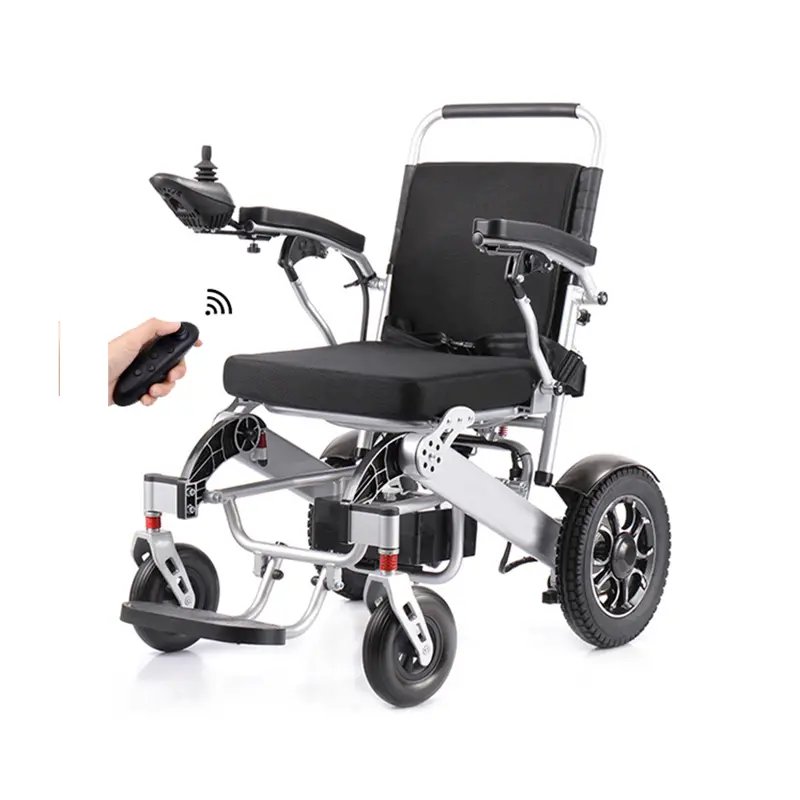Procurement Demand for Electric Wheelchairs in the European Healthcare System
I. Introduction
With Europe’s aging population and growing concern for the quality of life of people with disabilities, the importance of electric wheelchairs in European healthcare systems is becoming increasingly prominent. Electric wheelchairs are not only essential aids for daily life for people with limited mobility, but also play a key role in healthcare institutions, helping patients regain physical function and improve their ability to care for themselves. This article will provide an in-depth analysis of the procurement demand for electric wheelchairs in the European healthcare system, providing valuable reference for relevant practitioners.
II. Overview of the European Electric Wheelchair Market
The European electric wheelchair market is showing steady growth. Germany dominates the regional market, with its market value projected to reach US$407.7 million by 2030. The UK and French markets are also showing strong growth momentum, with a compound annual growth rate (CAGR) of 7.3% in the UK and 9.1% in the French market between 2023 and 2030. This growth is primarily driven by governments’ policies supporting people with disabilities and the elderly, as well as continued investment in advanced rehabilitation equipment by healthcare institutions.
III. Procurement Demand Analysis
(I) Product Types
When purchasing electric wheelchairs, European healthcare institutions choose different types based on the specific needs of their patients. Common electric wheelchair types include front-wheel drive, mid-wheel drive, and rear-wheel drive. Mid-wheel drive electric wheelchairs are favored by many medical institutions due to their excellent turning maneuverability and stability, making them particularly suitable for indoor environments such as hospital wards and rehabilitation centers. Furthermore, with technological advancements, some new electric wheelchairs now feature standing functions, helping patients better perform rehabilitation training and improve their ability to care for themselves.
(II) Application Areas
Electric wheelchairs are widely used in the European healthcare system, primarily in the following areas:
Hospitals and Clinics: In hospitals and clinics, electric wheelchairs are used to help patients with limited mobility move around the hospital, reducing physical effort for medical staff and improving work efficiency. These settings place high demands on the reliability and safety of electric wheelchairs to ensure patient safety during use.
Rehabilitation Centers: Rehabilitation centers are a key application area for electric wheelchairs. Here, electric wheelchairs serve not only as a means of transportation for patients but also as an important auxiliary device for rehabilitation training. Using electric wheelchairs allows patients to more actively participate in rehabilitation training, accelerating their recovery. Elderly Care Facilities: With the growing elderly population in Europe, the demand for electric wheelchairs in elderly care facilities continues to grow. These facilities need to purchase large quantities of electric wheelchairs to meet the needs of elderly people for daily activities and social interaction, improving their quality of life.
Home Care: More and more European families are choosing to provide care for family members with mobility issues at home. As a result, the demand for electric wheelchairs in the home care market has also been steadily increasing. Home users prefer electric wheelchairs that are lightweight, easy to operate, and foldable for use and storage in the home environment.
(III) Procurement Considerations
Quality and Safety: When purchasing electric wheelchairs, healthcare institutions prioritize product quality and safety. Electric wheelchairs must meet strict European safety standards, such as EN 12184. High-quality electric wheelchairs should have reliable braking systems, stable body structures, and good handling to ensure patient safety during use.
Comfort and Ergonomic Design: Patients who use electric wheelchairs for extended periods have high requirements for comfort. Therefore, healthcare institutions pay attention to the seat design, shock absorption performance, and adjustability of electric wheelchairs when purchasing. Good ergonomic design can reduce patient fatigue and improve the user experience. Durability and Maintenance Costs: Electric wheelchairs are often subject to prolonged and intensive use in healthcare facilities, making durability crucial. Healthcare facilities also prefer electric wheelchairs that are easy to maintain to reduce long-term costs.
Price and Budget: While quality is a primary consideration, price also plays a significant role in purchasing decisions. European healthcare systems vary in their budgets for electric wheelchair purchases. Some countries’ health insurance policies partially or fully cover the cost of electric wheelchairs, which influences purchasing decisions to some extent.
(IV) Procurement Channels
Direct Procurement: Some healthcare facilities choose to purchase directly from electric wheelchair manufacturers to ensure product quality and stable supply. Direct procurement also helps institutions establish long-term partnerships with manufacturers, facilitating ongoing product maintenance and technical support.
Distributor Procurement: Other facilities purchase electric wheelchairs through distributors. Distributors typically offer a variety of brands and models for institutions to choose from and provide a range of after-sales services. Distributors can also provide customized procurement solutions tailored to the institution’s needs.
Online Procurement: With the development of e-commerce, more and more healthcare facilities are procuring electric wheelchairs through online platforms. The advantages of online shopping are a wide selection of products, transparent pricing, and the ability to easily compare different brands and models.
Post time: Aug-29-2025


